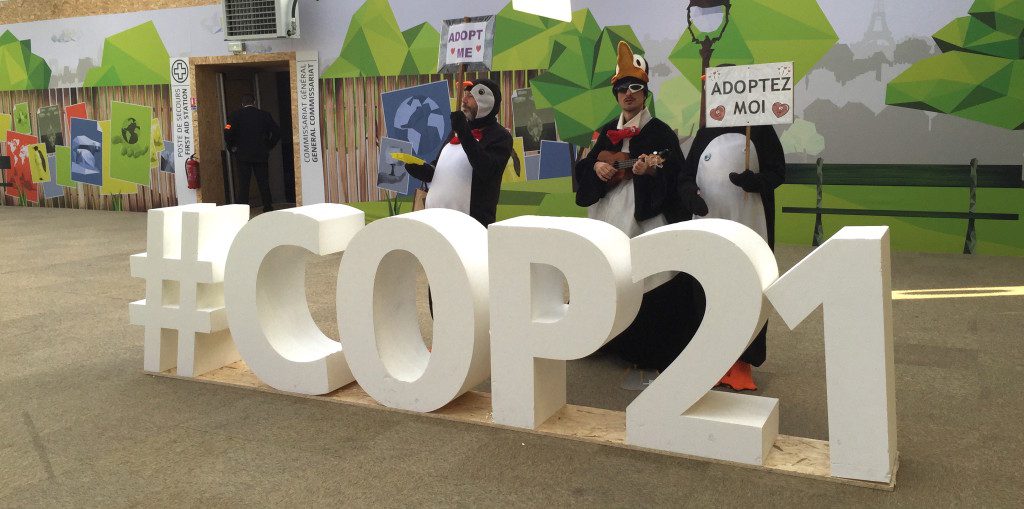The 21st Conference of Parties represents the biggest opportunity for agreeing on an international climate framework in many years. After years of preparations, it is almost certain that some agreement will be reached – but the strength of the agreement is an open question. Local officials have a key role to play in showcasing solutions and inspiring and advocating for an ambitious approach.
Post-2020 Agreement – INDCs and Raising the Level of Ambition Over Time
Negotiations are organized into two workstreams: Workstream 1 addresses the primary question of a post-2020 agreement, creating a framework for limiting long-term emissions. Workstream 2 encourages short-term solutions prior to the implementation of the post-2020 agreement.
In Workstream 1, nations representing more than 85% of global GHG emissions have submitted national commitments, or INDCs (intended nationally determined contributions). It has long been expected that these INDCs will not add up to reductions necessary to achieve the overall goal of avoiding climate change of 2 degrees Celsius above pre-industrial levels. We recommend emphasizing four key points on this topic:
- The COP should not be judged on the basis of whether 2 degrees is avoided – this has long been assumed.
- The agreement establishes a framework through which ambition can be increased and targets racheted down over time.
- The agreement should include a provision for re-evaluating and re-submitting targets at least every five years, starting before 2020.
- Cities can play a critical role in “bridging the gap” between UN member-state commitments and necessary emissions reductions. In many cases, local action is not accounted for in the INDCs.
Including a Long-Term Goal (LTG) in the Agreement
Acknowledging the shortcomings of current commitments noted above, the agreement should contain reference to a long-term goal for emissions levels in a certain time frame. A commonly held view of climate science and long-term goals holds that it is necessary to reach “near zero”, “phase-out” or “decarbonisation” in the 2050 / mid-century timeframe (Climate Briefing Service, Nov 25 2015). According to the Measuring Up report published by ICLEI and WWF earlier this year, 36 US cities have long-term goals of at least 80% reduction by 2050.
Measurement, Reporting and Verification
Transparent disclosure of national emissions among UN member-states will allow for accountability around INDCs. However, a number of countries are resistant to establishing standardized methods and platforms for regular accounting and reporting of emissions (particularly the BRIC nations – Brazil, Russia, India and China). The agreement should include a strong MR+V mechanism, allowing for implementation over time to build capacity in less-developed nations with fewer resources to dedicate. Cities are models that should be emulated. Almost 400 cities with a population of 330 million have committed to the Compact of Mayors, which requires standardized accounting according to the Global Protocol for Communities (GPC) and reporting into public platforms like ICLEI’s carbonn Climate Registry (cCR) or Carbon Disclosure Projection (CDP).
